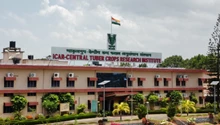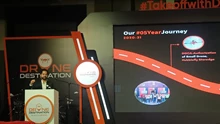
Worrisome projections of widespread and escalating food insecurity in India have been highlighted in the most recent State of Food Security and Nutrition in the World (SOFI) report, which was jointly released on July 6 by five UN organisations.
Based on the information in the report, it can be estimated that between 2019 and 2021 around 56 crore Indians, or 40.6% of the total population, had moderate or severe food insecurity. The percentage of the population in the nation that experiences extreme food insecurity has increased from 20.3 percent in 2018–20 to 22.3 percent in 2019–21. In 2019–21, the equivalent percentage for the entire world was approximately 10.7%. 37 percent of all people who are extremely food insecure live in India alone.
The Prevalence of Undernourishment (PoU) and the Prevalence of Moderate and Severe Food Insecurity (PMSFI) at the global, regional, and national levels are presented in the SOFI report each year. The PoU calculates the percentage of the population that, given their age, sex, and body mass, does not typically consume even the minimum number of calories needed for a normal and active life. The percentage of the population that experiences various degrees of food insecurity is estimated by the PMSFI. These projections are based on surveys that gather data on people's experiences with restricted access to food. These polls are carried out globally as part of the Gallup World Poll and are ordered by the Food and Agriculture Organization (FAO) of the United Nations.
The FAO assesses the number and proportion of people experiencing mild, moderate, or severe food insecurity using data gathered through these surveys.
PoU and PMSFI are internationally recognised as indicators for tracking the advancement of Target 2.1 (to eliminate hunger) under the Sustainable Development Goals. They are scientifically well-defined and reliable indicators of food insecurity. The main indicator of hunger used to calculate the commonly used Global Hunger Index is the prevalence of undernourishment.
The percentage of persons who experience chronic hunger has risen from 14.6 percent in 2018–20 to 16.3 percent in 2019–21, according to data from the most recent report. India once again holds the dubious distinction of having the most hungry people in the world, with 22.4 crore in 2019–21.
Estimates on PMSFI for India are not officially provided because the Government of India bans FAO from publishing them, despite the fact that PoU estimates for India are published by FAO in the SOFI report. However, by comparing the estimates for "South Asia" and estimates for "South Asia excluding India," which are both included in the study, it is possible to infer these PMSFI values for India. According to these estimates, there has been a significant increase in the prevalence of moderate or severe food insecurity in the nation, from 27.7 percent in 2014–16 to more than 40 percent in 2019–21.
The most recent two data points, for 2018–20 and 2019–21, demonstrate that in India during the first year of the Covid pandemic, an extra 2.4 crore persons experienced chronic hunger and almost four crore more experienced moderate to severe food insecurity. It is also noteworthy that current trends indicate a considerable rise in the number of Indians experiencing acute food insecurity - up around 11% from the previous estimate in 2019–21.
The latest report's estimates are significant because they capture the toll both the Covid-19 outbreak and the current economic crisis have taken on people's lives. Given that the government has not carried out any nationwide surveys to determine how the crisis has affected circumstances of poverty and food insecurity, they assume special significance. Even the 2017–18 National Sample Survey Office consumption survey was kept secret by the administration.
Estimates based on the most recent SOFI study suggest a surge in hunger and food insecurity, which underscores the terrible effects that the 2020 lockout and ongoing economic crisis have had on people's lives. While government representatives have been taking credit for the widespread distribution of free food grain under the PM Garib Kalyan Anna Yojana (PMGKAY), the mechanism of food grain distribution has been constrained by three significant issues.
First, in accordance with the National Food Security Act (NFSA), the public distribution system should provide food to two-thirds of the population as of the most recent census (PDS). The coverage of PDS has, however, significantly decreased from the required 66 percent because the previous census was taken more than 11 years ago and the census for 2021 has been delayed. According to official demographic forecasts, the coverage does not extend to more than 10 crore citizens of the nation.
Second, over 4.4 crore ration cards have been cancelled since 2014, according to data. Aadhaar seeding has been used as a tool in this process in order to eliminate fake and duplicate cards. However, in practice, while the initial identification of NFSA beneficiaries was done through a national socio-economic census, cancellation of cards and inclusion of other households in their place have been done on an ad hoc basis, without any set criterion or procedure.
Thirdly, the PMGKAY initiative, which was started to improve public grain distribution during the Covid epidemic, has only increased the grain distribution to households that were already eligible for NFSA coverage. The epidemic crisis demanded that grain be distributed as widely as possible. However, despite the fact that a significant number of previously employed people who lost their jobs as a result of the crisis were probably going to be facing increasing food insecurity, the administration has been resolute in refusing to include households other than NFSA beneficiaries under PMGKAY.
The one-nation, one-card programme has not yet been executed, despite the fact that the government could have easily made the PDS universal during the Covid epidemic had it not been for the pursuit of unworkable technical solutions.











